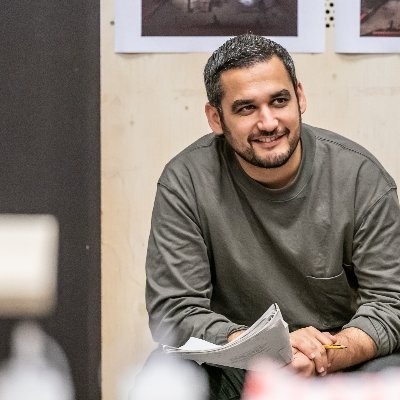“Love,” the great photographer Diane Arbus once said, “involves a peculiar, un-fathomable combination of understanding and misunderstanding.”
In Candida, George Bernard Shaw’s play of 1894, such understanding and misunderstanding is all around: a fine confusion that gives it a great deal of its power. It’s not only that more than one of its characters is in love with quite the wrong person. Its men are often bewildered by its women: a gulf in understanding that (many women will feel) continues today, and is perhaps one reason why Candida can seem so modern. “Oh, what a profound knowledge of the human heart you have, Mr Lexy Mill,” says Miss Proserpine Garnett sarcastically, to her employer’s bumptious curate (she is the devoted secretary of the Rev. James Morell). “It must be so nice to be a man and have a fine penetrating intellect instead of mere emotions like us…”
In Candida, Shaw puts two sides of himself on stage. The Rev. James Morell is a Christian socialist: a good man – even if, at times, his goodness is rather on the ostentatious side (another aspect of the play’s modernity may be found here: Morell, for all his kindness and “considerate manners”, is also somewhat given to what we might call virtue-signalling). He cares for his parishioners in east London, and he loves his wife, Candida, the woman who, though he only half understands understands this, makes his life possible. He is solid, and muscular. Eugene Marchbanks, on the other hand, is not solid at all. A nervy, melodramatic 18-year old poet who insists on his status as an outsider in spite of his aristocratic roots, he represents Shaw’s yearning, artistic side. His tendency is to idealise those he admires, and because of this, is apt to find himself disappointed.
The two men form an irregular triangle with Candida, who has taken up Marchbanks in her usual easy way (Shaw tells us that she is a woman who finds it easy to engage the affections of others, doing so “frankly and instinctively, without the smallest scruple”). Marchbanks is in love with her, and though the audience has every reason to be suspicious of his adoration – what a callow youth he is – this doesn’t mean that he isn’t on to something when he asks Morell how his wife’s “great soul”, which craves reality, freedom and truth, can possibly get by on his “sermons and stale perorations”. He might be young, and he might be silly, but with his question he has ruthlessly invaded the sacred citadel of a marriage, at which point Shaw’s implication becomes all too clear (his writing at this point, bracingly direct, brings to mind D H Lawrence rather than, say, his contemporary Oscar Wilde). Marchbanks may be able to supply Candida with things that Morell cannot. In the drawing room of the parsonage, sex suddenly hangs heavy in the air. Is the unspoken suggestion here of a menage a trois, or a more open relationship? I think that is. How else to explain the panic and confusion into which the usually calm and stodgy Morell now descends?
I had better not reveal which man Candida chooses. Suffice to say that her decision is surprising. This is true in the context of the emotional landscape of the play. But it’s also true in the context of Shaw’s times. The Woman Question is mentioned in Candida early on (by Proserpine), and in the period during which he was working on it, the literary world had begun more fully to address the issue of a woman’s status, rights and desires. In 1893, George Gissing had, for instance, published The Odd Women, a novel that tackles head on what it means for a woman to live without a man. In 1895, Thomas Hardy would shock his readers with Jude the Obscure, in which the hero and his cousin, Sue Bridehead, are ostracised for living together out of wedlock.
There was change in the air — and a certain kind of daring. In 1894, the year that Shaw completed Candida, George du Maurier’s novel Trilby arrived on the scene: a bestseller that had both a profound impact both on the notion of bohemia, and on many young women, who drew from it a certain kind of courage regarding their bachelor girl status (it tells the story of an artist’s model who falls under the influence of a hypnotist called Svengali). The cloistered realm of Shaw’s play is vastly different from those of all these novels, but not for nothing does he call his heroine Candida — a name that means, in Latin, dazzling white. She is at once both a source of bright energy – her mind, unlike that of those around her, is wide open – and a blank canvas on which others seek, mostly against her wishes, to inscribe their own thoughts.
In the end, she is the play’s truth teller. She is clear-sighted, where the men are too often deluded. She is up front, where they are all too easily shocked. As she puts it: “How conventional all you unconventional people are!” Her husband has, she says, taught her to think for herself, and never to hold back on account of what others make of her. But, alas, he did not fully consider the implications of this act of generosity. “It works beautifully as long as I think the same things as he does,” she says with some wit, towards the end of the play. If Candida begins as an idealised figure, one seen largely through the eyes of the men who adore her, she ends by being the real thing: a woman who knows not only what she wants, but why.
Rachel Cooke is an award winning journalist. She is a writer and columnist at The Observer, and is the television critic of The New Statesman. Her essays have been broadcast on Radio 3. Her book, Her Brilliant Career: Ten Extraordinary Women of the Fifties, is published by Virago.
CANDIDA was first performed at the Orange Tree on 22 November, directed by Paul Miller.
Photo (Claire Lams as Candida) by Johan Persson


